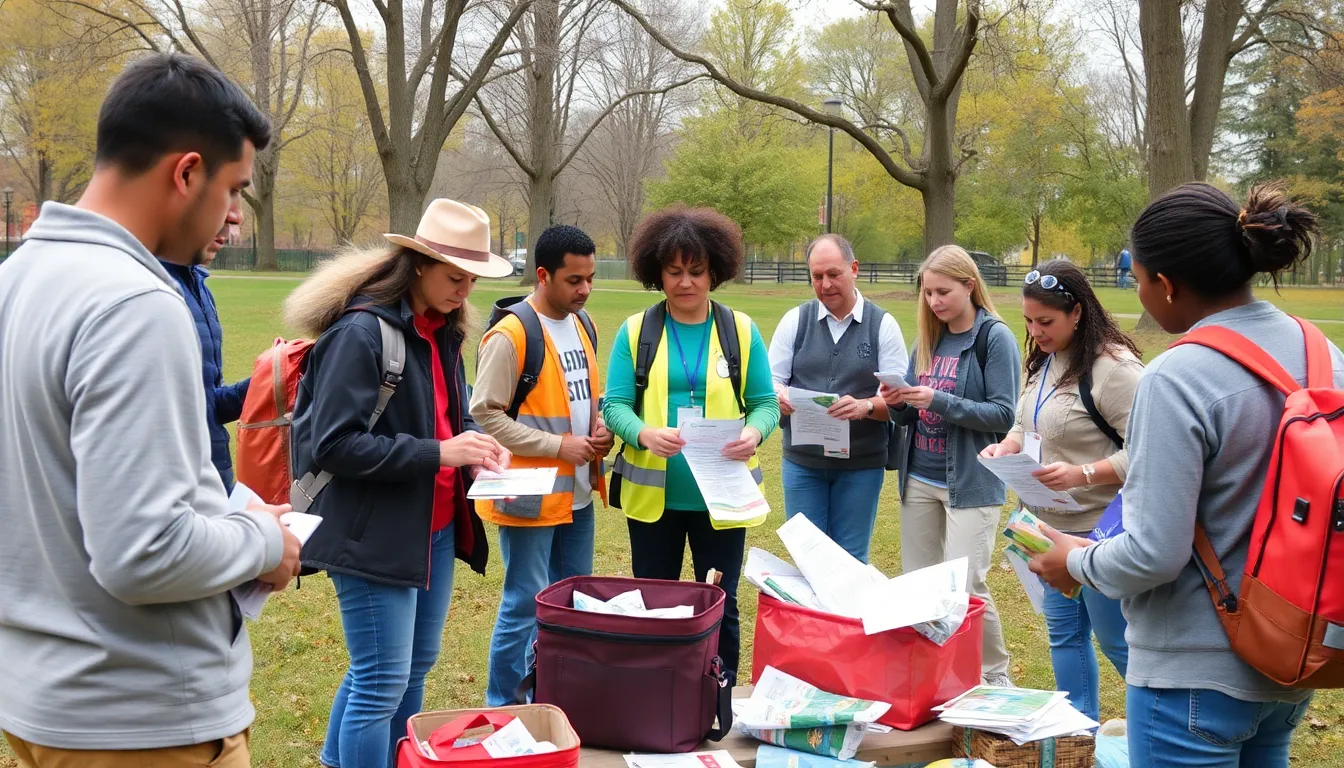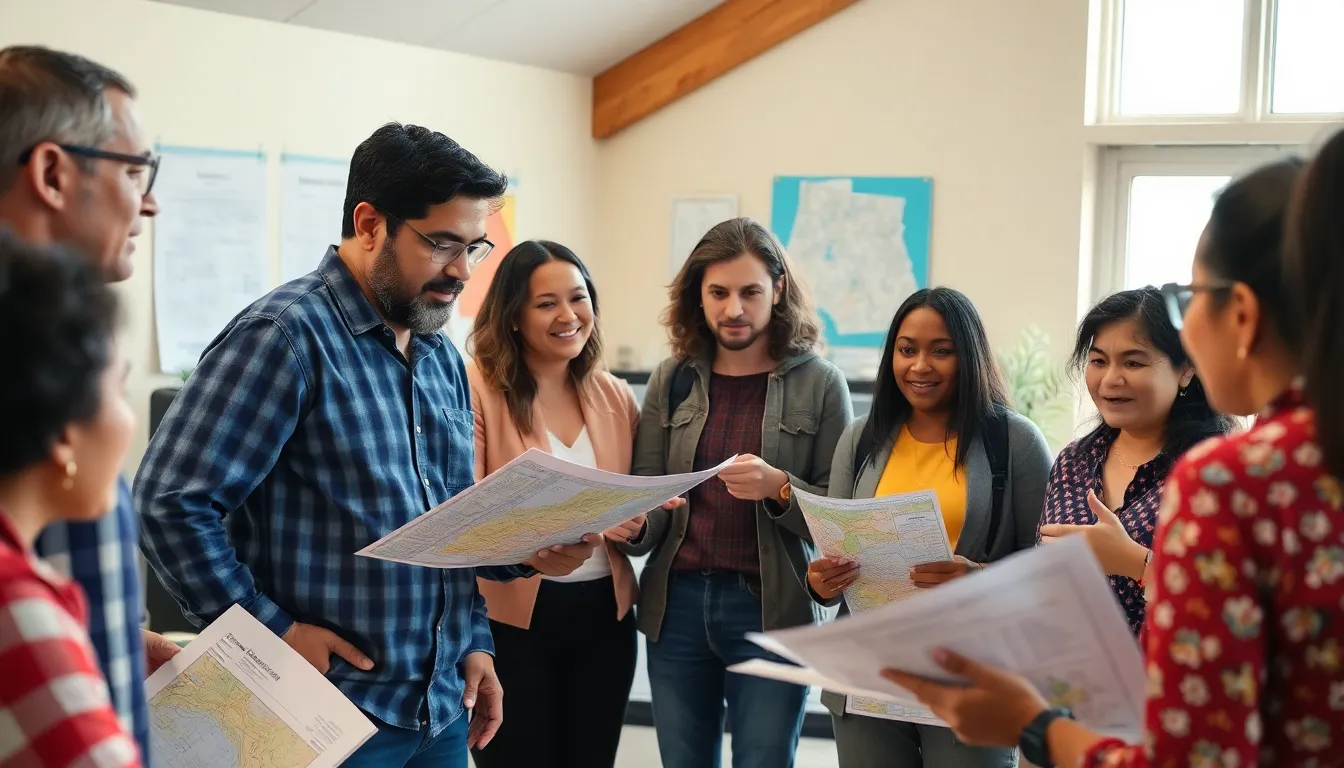When life throws a curveball—like a hurricane, earthquake, or that surprise visit from your in-laws—disaster resilience steps in to save the day. It’s not just about hunkering down and hoping for the best; it’s about being the superhero of your own story, ready to face any calamity with a plan and a smile. Imagine turning chaos into an opportunity to shine.
Table of Contents
ToggleUnderstanding Disaster Resilience
Disaster resilience encompasses the capacity to prepare for, respond to, and recover from adverse events. It aims to maintain societal functions and reduce vulnerability during crises.
Definition of Disaster Resilience
Disaster resilience refers to the ability of individuals, communities, and systems to anticipate, withstand, and recover from disruptions caused by disasters. Characteristics of disaster resilience include adaptability and proactive planning. Resilient entities integrate risk assessment and management practices effectively. They develop strategies that minimize harm and expedite recovery processes. To achieve this, communities often rely on collaboration and resource-sharing among various stakeholders.
Importance of Disaster Resilience
Disaster resilience plays a critical role in safeguarding lives, property, and ecosystems. Prepared communities can reduce financial impacts and speed up recovery efforts. Resilience helps maintain essential services during crises, allowing for quicker stabilization of daily activities. Additionally, fostering a resilient mindset enhances social cohesion, empowering individuals to support one another. Building resilience not only mitigates risks but also cultivates a culture of preparedness, leading to long-term benefits for future generations.
Key Components of Disaster Resilience

Disaster resilience encompasses several vital components that enhance an individual’s and community’s ability to withstand adverse events. Understanding these components is crucial for effective disaster management.
Preparedness
Preparedness involves planning and training for potential disasters. It includes creating emergency plans, conducting drills, and assembling disaster kits with essential supplies. Recognizing local risks contributes to tailored strategies that enhance individual and communal readiness. Engaging community members fosters collaboration, ensuring everyone understands their role during a crisis. Utilizing resources from organizations such as FEMA or the Red Cross can provide valuable guidance and tools for effective preparedness.
Response
Response actions occur immediately after a disaster. Coordinated efforts from emergency services, volunteers, and community members play a critical role in ensuring safety and security. Establishing clear communication channels guarantees that accurate information is disseminated promptly. Resources such as shelters, medical assistance, and supplies must be accessible to those in need. Effective response strategies significantly reduce chaos and support quick recovery efforts.
Recovery
Recovery focuses on restoring normalcy after a disaster strikes. It involves assessing damages, providing mental health support, and rebuilding infrastructure. Collaborative efforts between local governments, nonprofits, and community organizations streamline restoration processes. Prioritizing recovery initiatives enables communities to emerge stronger from adverse events. Utilizing recovery programs can offer financial assistance and resources necessary for rebuilding lives and livelihoods.
Mitigation
Mitigation aims to reduce the impact of future disasters by implementing strategies that lessen vulnerability. Identifying potential hazards and addressing them through infrastructure improvements is essential. Examples include strengthening buildings, creating sustainable land-use plans, and developing flood defense systems. Community education programs raise awareness about risks and promote proactive measures. Investing in effective mitigation strategies fosters long-term resilience and can save lives and resources in future crises.
Strategies for Enhancing Disaster Resilience
Disaster resilience requires proactive strategies across various domains. Implementing effective approaches enhances preparedness, response, recovery, and mitigation.
Community Engagement
Community engagement fosters collaboration and strengthens social networks. Active participation in local planning events allows individuals to understand risks and contribute to resilience initiatives. Education programs raise awareness about disaster preparedness and recovery procedures. Regular drills create familiarity with response protocols, ensuring community members feel confident during crises. Local partnerships can bolster resources for those in need, enhancing collective response capabilities.
Infrastructure Improvement
Infrastructure improvement plays a critical role in disaster resilience. Investing in resilient designs minimizes damage during extreme events. Upgrading utilities and transportation systems ensures continuity of essential services following a disaster. Implementing green spaces and buffer zones can reduce flooding impact and promote biodiversity. Regular maintenance checks identify vulnerabilities, allowing for timely repairs and upgrades that enhance overall safety.
Policy and Governance
Policy and governance structures set the foundation for effective disaster resilience strategies. Comprehensive planning at local, state, and national levels establishes clear protocols for disaster preparedness. Funding allocations support critical infrastructure projects and community programs, driving sustainable outcomes. Collaboration among government agencies, NGOs, and private sectors creates a unified approach to disaster management. Regular evaluation of policies ensures they adapt to emerging risks and community needs, optimizing resilience efforts.
Case Studies of Effective Disaster Resilience
Examining successful case studies highlights practical applications of disaster resilience. These examples offer insights into effective strategies and their outcomes.
Successful Examples
New Orleans demonstrated remarkable resilience after Hurricane Katrina in 2005. The city enhanced its levee systems and developed comprehensive emergency plans. Japan’s recovery from the 2011 earthquake and tsunami showcases rapid mobilization of resources and community collaboration. Infrastructure investments ensured better preparedness for future seismic events. In recent years, the Philippines implemented community-based disaster risk management programs. These initiatives empowered local residents to identify hazards and improve response efforts effectively.
Lessons Learned
Critical lessons emerge from these examples. Priority needs to be placed on continuous community engagement for effective disaster management. Data-driven planning proves essential in understanding vulnerabilities and resource allocation. Collaboration among government, NGOs, and communities fosters stronger support networks. Flexibility in response strategies accommodates unique challenges that arise during each disaster. Finally, long-term investment in infrastructure strengthens resilience and recovery capabilities, ensuring a more prepared society for future challenges.
Future Directions in Disaster Resilience
Disaster resilience continues evolving, reflecting shifting needs and challenges. Emerging strategies and technologies are reshaping how communities prepare for and respond to crises.
Emerging Trends
Community engagement strongly influences disaster resilience. Recent trends emphasize shared ownership in resilience efforts, encouraging individuals to participate in planning and preparedness training. Collaboration among diverse groups enhances effectiveness and builds trust. Data-driven approaches guide assessments, helping identify specific vulnerabilities within communities. Climate adaptation strategies also gain traction, integrating environmental considerations into resilience planning. Emphasis on mental health resources during recovery supports individuals facing emotional challenges. Fostering social networks strengthens community engagement. By prioritizing these emerging trends, communities can better equip themselves to face future disasters.
Technological Innovations
Technological advancements play a pivotal role in enhancing disaster resilience. Geographic Information Systems (GIS) provide detailed mapping of hazards, improving situational awareness during emergencies. Drones capture real-time data, aiding response efforts, while mobile applications facilitate efficient communication among responders and communities. Artificial Intelligence (AI) enables predictive modeling for disaster scenarios, enhancing planning strategies. Additionally, remote sensing technologies monitor environmental changes, providing crucial insights into vulnerabilities. Investing in these technologies not only improves response times but also supports long-term recovery initiatives. By harnessing innovations, communities can adapt dynamically to emerging environmental threats.
Disaster resilience is more than just a response mechanism; it’s a proactive approach to safeguarding communities and individuals against unforeseen challenges. By embracing preparedness, fostering community engagement, and leveraging technology, societies can build a robust framework for resilience.
Investing in infrastructure and effective governance ensures that resources are available when crises strike. As communities learn from past experiences and adapt to emerging threats, they cultivate a culture of preparedness that benefits everyone.
Ultimately, the journey toward resilience is ongoing. It requires commitment and collaboration, but the rewards are invaluable. A resilient community not only survives adversity but thrives in its aftermath, paving the way for a stronger future.


